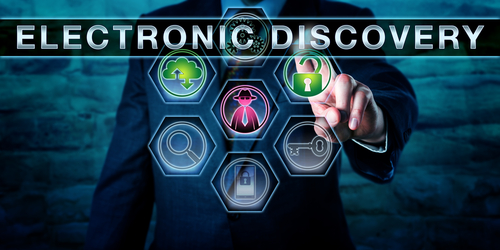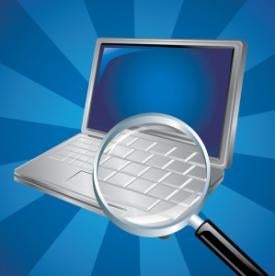One of my favorite novels is William Gibson’s sci-fi cyberpunk masterpiece, Neuromancer. In the book, hackers “jack-in” to cyberspace (Gibson’s book popularized the term) and explore massive, shining cities of data that represent the Internet. Our world is some time away from Gibson’s vision of hacking. But the massive cities of data he describes are no longer in the realm of fiction.
 Consider how many emails you get every day. Massive amounts of data are created daily. I have previously written about how law firms must adopt new technology to grow and succeed. E-Discovery is a vital part of the legal process, and lawyers need to know how to navigate these shining cities of data.
Consider how many emails you get every day. Massive amounts of data are created daily. I have previously written about how law firms must adopt new technology to grow and succeed. E-Discovery is a vital part of the legal process, and lawyers need to know how to navigate these shining cities of data.
e-Discovery: An Overview
Electronic discovery (e-discovery, ediscovery, eDiscovery, or e-Discovery) is a part of the normal discovery process. In the past, the parties involved in a legal dispute would exchange relevant information in the form of physical documents. Today, documents are increasingly generated digitally requiring a fundamental change in the discovery process.
Thus, the “e” in e-Discovery stands for electronic. E-Discovery is the process by which parties share, review, and collect electronically stored information (ESI) to use as evidence in a legal matter. ESI is a broad term that can encapsulate a whole host of digitally created content. Emails, Microsoft Word documents, social media posts, company-specific databases, audio and video files all fall under the domain of ESI.
The e-Discovery process is long and complex. It begins as soon as litigation is foreseeable, at which time, attorneys from both sides will find and preserve the relevant ESI and make e-discovery requests and challenges. It is important to preserve the original content to avoid claims of evidence tampering. The ESI is placed on a legal hold while attorneys and paralegals search for relevant documents.
Attorneys can use e-Discovery software like Computer Assisted Review (CAR) or Technology Assisted Review (TAR) to cut the time and cost of the review process. Either software can sift through a multitude of documents and help attorneys find the ESI relevant to the case. Coupled with the automation features provided by legal case management software, attorneys can simplify the e-Discovery process and do their work faster and better.
Once the relevant documents are selected for production, they can be converted to a format like a PDF and presented in court. ESI is so valuable to attorneys because it can offer the key piece of evidence to win a case.
Why Does e-Discovery Matter?
Simply put, in the very near future, e-Discovery will be essential for an attorney to provide competent representation. In fact, amendments to the Federal Rules of Civil Procedure (FRCP) have already been made to recognize e-Discovery as a vital procedure for civil lawsuits. The most common malpractice claims are the result of simple laziness or bad recordkeeping on the attorney’s part. We will soon have to add inexperience with e-Discovery to that list.
As the scope and volume of ESI intensify into the shining cities of data Gibson envisioned, attorneys will have to become experts at navigating these cities like the hackers in Neuromancer. This means that attorneys and other legal professionals will have to learn new technical skills. A defensible e-discovery process will make strange bedfellows of attorneys and IT professionals. Yet, these skills are rarely taught in law school despite how valuable they will be to an attorney’s career.
Furthermore, e-Discovery work is increasingly being done in-house. In the past, many e-Discovery tasks were outsourced to third parties. Post-recession, the trend is to save money by bringing the work in-house. Moreover, e-Discovery software (like the two mentioned before) are making the in-house review stage of the e-Discovery process much more cost-effective. Meaning that unless an attorney is willing to shell out a lot of cash, they cannot escape ESI.
The only solution is to avoid foot-dragging. Attorneys should take steps now to familiarize themselves with the e-Discovery process.
How to Use e-Discovery
Thankfully, legal professionals can use the Electronic Discovery Reference Model (EDRM) as a starting point. The EDRM is widely considered the definitive framework for the e-Discovery process. The EDRM divides the e-Discovery process into nine iterative “stages” (meaning one might repeat the same step multiple times) connected by arrows. What follows is a summary of the stages.
-
Information Governance (IG): IG is the process of getting your shining house of data in order to mitigate risk and expenses. As companies create, collect, and store more data they must consider how to keep that data secure, private, and compliant. From creation to deletion, IG is about getting companies to create and carry out a series of procedures for how they create, manage, store, and secure ESI. This also includes the legal and regulatory obligations tied to e-Discovery. IG even has its own model for legal professionals to follow: The Information Governance Reference Model (IGRM).
-
Identification: In order to prepare for litigation, the legal teams need to identify and decide what pieces of ESI are relevant.
-
Preservation: Relevant ESI cannot be destroyed or altered. This is usually done through a legal hold sent to the custodians of the data informing them not to delete certain ESI.
-
Collection: ESI must then be gathered for processing, review, etc. with no alterations to the ESI.
-
Processing: The collected ESI must be prepared for attorney analysis. To help reduce the volume of data specialized software is used.
-
Review: This stage involves evaluating ESI for relevance and privilege. Software like Computer Assisted Review (CAR) or Technology Assisted Review (TAR) can distinguish between relevant and non-relevant documents.
-
Production: Produce relevant ESI as evidence following court rules and procedures.
-
Presentation: The last step is displaying ESI as evidence in a trial, deposition hearing, etc.
While at times complex and arduous, the e-Discovery process is an unavoidable part of the larger legal process. Attorneys cannot afford to lag behind, especially when the consequences can be as severe as a malpractice complaint or lower profits. Attorneys need to take the time to review the appropriate materials on e-Discovery and become experts in the EDRM model. Those cities of data are waiting to be traversed. Make sure you know your way around.




 i
i

